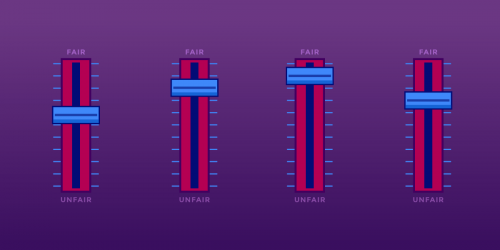Today the Progress & Freedom Foundation (PFF), a DC-based "market-oriented think tank that studies the digital revolution and its implications for public policy," released a report entitled "The DMCA Dialectic: Towards Constructive Criticism." In the report, PFF Senior Adjunct Fellow Solveig Singleton argues that DRM, and laws to stand behind it, are necessary because "somehow, one needs boundaries to exclude free riders. Not all free riders, but enough to have a critical mass of paying customers."
In other words, the report subscribes to the "DRM as speed bump" theory. But does DRM actually provide that kind of "boundary"? Amazingly, the PFF report fails to mention the now famous "Darknet paper," authored back in 2002 by senior Microsoft security engineers. Here's a summary of the insights set out in that paper (for a longer discussion, see Measuring the DMCA Against the Darknet):
[The Microsoft Darknet] paper sets out three assumptions about the modern digital environment:
- Any widely distributed object will be available to some fraction of users in a form that permits copying.
- Users will copy objects if it is possible and interesting to do so.
- Users are connected by high-bandwidth channels.
These insights, taken together, render obsolete the basic mechanism on which the efficacy of the DMCA's anti-circumvention regime depends. The first assumption is simply another way of saying that no TPM has yet been developed, nor is one likely to be developed, that is invulnerable against an expert attacker. The remaining assumptions imply that, once compromised by a sophisticated attacker, a TPM is effectively useless at further restricting the widespread redistribution because users have the capability to rapidly duplicate and propagate the now-unprotected work. In other words, in light of modern digital distribution technologies, all it takes is "one leak" to neutralize a TPM entirely. Rightsholders are left no better off (from an enforcement point of view), than they were without a TPM.
Of course, this is old news to computer security experts, information technology professionals, and those of us who pay attention to what music and movie fans are actually up to (psst, PFF, most people don't use DeCSS anymore, and Grokster never had many users to begin with). But it's amazing that, four years after the Darknet paper, inside-the-Beltway DMCA boosters like PFF are still pretending that the "DRM as speed bump" theory has merit.
Fortunately, DRM (and the DMCA to stand behind it) isn't the only "boundary" that can support well-functioning markets for digital goods. It turns out that there are plenty of ways to "compete with free" by offering convenient, high-value products that cater to what consumers want.
Take DVDs. The DVD market has been a success despite the failure of the CSS encryption that was supposed to protect it. As we recently had to point out to another inside-the-Beltway outfit, the U.S. Copyright Office, free, easy-to-use DVD rippers abound. And copies of movies are readily available for downloading. Yet movie fans keep buying and renting DVDs. Does anyone seriously think that the DVD market would collapse (or even be noticeably deflated) if movie studios gave up on CSS? It may seem obvious to us outside the Beltway, but apparently PFF needs to be told - it's not the CSS that's holding up the DVD market!
PFF's report confuses correlation with causation when it concludes that "the outpouring of digital content offerings since the DMCA was enacted" demonstrates that DRM and the DMCA have been a success. Just as the Darknet paper predicted, digital content markets are succeeding despite DRM, not because of it. As the Darknet paper points out, those markets would likely be even more successful without DRM, since DRM restrictions give at least some would-be customers a reason to prefer Darknet alternatives.
So, in the real world, the DMCA is not succeeding in fencing out free riders. It is, however, inflicting collateral damage on fair use, research, innovation, competition, and free speech. Let's hope PFF and other inside-the-Beltway sorts can puzzle out the cost-benefit math that stems from those realities.








